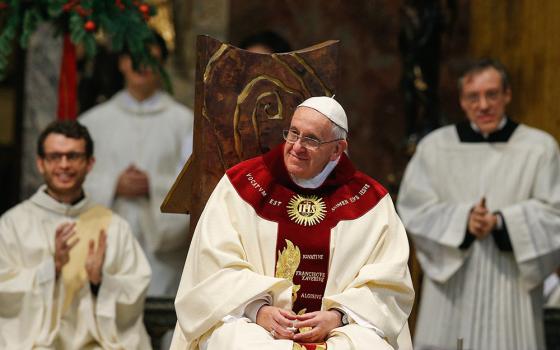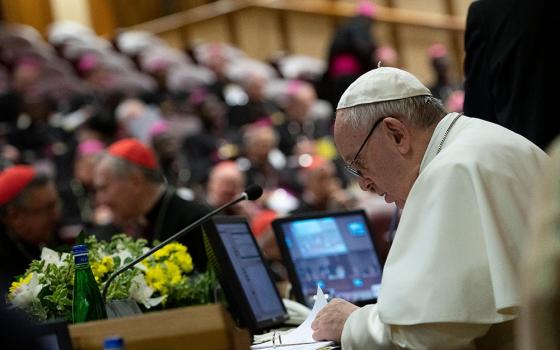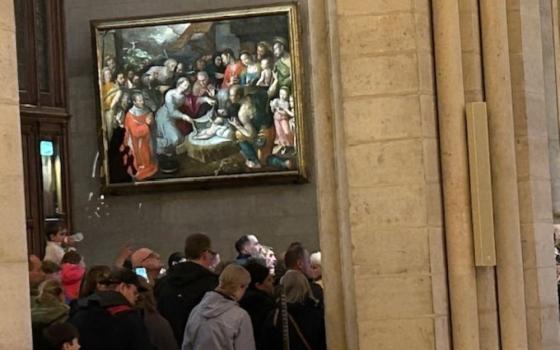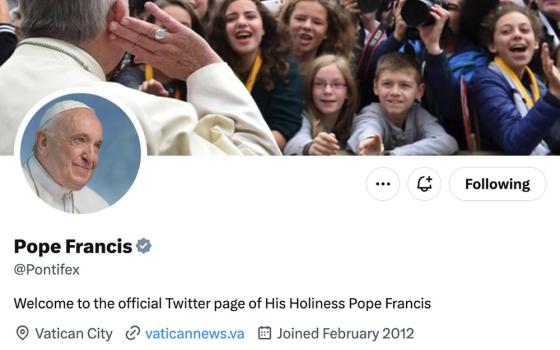Higher Education is in a strange place in the U.S. today. Everyone agrees it is important, but the discussions about why it is important, what it should seek to achieve, and how it should be paid for have yielded more questions than answers. This is especially true of Catholic higher education. Two recent books look at some of these issues and, over the next couple of days, I will review them, starting this morning with Building Catholic Higher Education: Unofficial Reflections from the University of Notre Dame by Christian Smith and John Cavadini.
Notre Dame occupies an iconic place in U.S. Catholic higher education. But, the questions raised by Smith and Cavadini have broad relevance. And, the first question raised is how to balance the objectives of being a top rate research university, with providing excellent undergraduate instruction and understanding both these tasks in the light of our Catholic faith. Many secular schools have difficulty balancing the first two tasks: Many research universities provide lousy undergraduate instruction and many smaller liberal arts colleges provide strong undergraduate education but do not make any appreciable mark when it comes to research. Add in the Catholic angle, and you face a daunting challenge.
As Smith states right at the beginning that the academic climate makes it especially hard for a Catholic university to fulfill its threefold mission, but as is typical of Smith, he is attuned to the ways that insufficient answers can be given to the issue of Catholic identity. He writes:
The sociological forces at work to undermine the integrity of Catholic higher education, to secularize Catholic colleges and universities, to force them to conform to purposes, standards, and programs that are often at odds with Catholic education are legion and immensely powerful. To resist them effectively without falling into a defensive, sectarian posture, which would be very un-Catholic, is a Herculean task – yet one that must be accomplished if Catholic colleges and universities are to be true to their histories, identities, and highest callings.
The ratings’ schemes devised by those who evaluate and compare schools do not bonus points for a robust theology department. And, there is no demonstrable way to quantify scientifically the religious ethos of a place. Still, It is hard not to detect here that Smith rejects the Steubenville/Ave Maria model, which is precisely defensive, sectarian and, as Smith rightly notes, un-Catholic, no matter how much they protest otherwise.
Smith makes the case, better than anyone, that Catholic identity and mission cannot be a kind of spiritual wrap-around. Retreats, the availability of the sacraments, the presence of religious art on campus, these are all good things but they are not the core of what a university does. What a university does is research and teach, and our faith must, repeat must, have something to say about how we research and teach or that faith is an accessory at the university and nothing more.
Smith turns to official statements of the university and especially to statements by Notre Dame University President Fr. John Jenkins, CSC, to outline how, at Notre Dame at least, the relationship of faith to the intellectual life of the university can and should develop. Smith quotes extensively from a statement on mission and faculty that Fr. Jenkins wrote with the school’s Provost, Thomas Burish. There we read:
Essential to Notre Dame’s mission is its commitment to sustaining a dialogue between faith and reason across the disciplines. The conviction that there is ultimately no conflict betweens the truths of faith and those discovered by reason underlies our work at a Catholic university….Within the academy today, there exists widespread incomprehension of – even hostility toward – the conviction that religious and theological perspectives can speak to and enrich reasoned analysis. The resulting vacuum provides the University of Notre Dame with an opportunity – some might say the responsibility – to even more strongly support the efforts of its students and faculty to explore the intersections between faith and reason, pursuing both as mutually reinforcing rather than mutually exclusive…..
……
In addition, all seekers of truth are vitally important to the furtherance of the dialogue between faith and reason, a foundational aspect of Notre Dame’s academic mission. Such faculty members enrich, broaden, and advance the conversation between faith and reason so that this dialogue is truly inclusive and complete rather than a self-deceptive and narrow monologue.
One reads that and wonders how a few self-proclaimed Catholic identity enforcers have the gall to insult Notre Dame’s commitment to its Catholic identity. This passage also challenges those schools that think having a strong theology department is enough: the dialogue between faith and reason must reach across disciplines, not become isolated in a school of religious studies. And, those who think mere repeating Church doctrine, or hiring only Catholics as professors, or so isolating students from the ambient culture that they do not engage the world but withdraw from it, they find plenty to challenge them in these passages too. Finally the phrase “a self-deceptive and narrow monologue” could well be applied to the intellectual life driving the U.S. bishops conference these days. By way of example, it appears they have learned nothing from the meltdown in Indiana, and consequent tarnishing of their favored cause of religious liberty. That happens when one only speaks to the like-minded. Notre Dame’s conscious effort to recruit top evangelical scholars, which began in the wake of Vatican II and continues to this day, is a kind of bulwark against narrowness. Perhaps the next staff retreat for the USCCB leadership could take the form of some on-campus training in South Bend.
Smith cites a white paper written by Rev. Robert Sullivan that, amongst other good points, argues against the homogenizing trends in higher education and holds out the hope that Notre Dame, and other Catholic universities, can resist those trends. Sullivan touches what appears to be a latent defensiveness under the Dome:
A Catholic research university needs to create an alternative to the “Harvard-Berkeley model of excellence.” ….When people and institutions really know themselves and are at their best, they can feel more comfortable with people and institutions different from themselves. And sometimes they can be more generously welcoming of the other and thus grow and change themselves. The ethos that supports Notre Dame’s human education has that capacity….Insofar as Notre Dame’s Catholicism is learned and self-confident, it will be strong enough to support religious inclusion without demanding religious dilution, or even religion, of those who belong here. To know oneself through and apart from the other; to seek agreement while respecting difference; to live together in comity without seeking uniformity – these phrases may sound bland and clichéd, but they evoke something of authentic cosmopolitanism, a rhetorical commonplace which is rare in life.
If Smith’s book stopped there, at the end of the first chapter, it would be a good read. Compiling the different official and semi-official statements that the university itself makes about its mission is instructive – and hopeful for those of us who believe Catholic higher education can be both excellent and Catholic. Indeed, in the increasingly chaotic intellectual climate of post-modernism, the Catholic intellectual tradition makes academic excellence more likely. But, for today, we can stop there too. Those statements chart a direction, but they do not provide the details. Tomorrow, I will continue, looking at Smith’s teasing out the implications and the how-to’s of the ambitious agenda he has identified sitting in plain sight in the official statements of the university.




